Archives
- By thread 5344
-
By date
- June 2021 10
- July 2021 6
- August 2021 20
- September 2021 21
- October 2021 48
- November 2021 40
- December 2021 23
- January 2022 46
- February 2022 80
- March 2022 109
- April 2022 100
- May 2022 97
- June 2022 105
- July 2022 82
- August 2022 95
- September 2022 103
- October 2022 117
- November 2022 115
- December 2022 102
- January 2023 88
- February 2023 90
- March 2023 116
- April 2023 97
- May 2023 159
- June 2023 145
- July 2023 120
- August 2023 90
- September 2023 102
- October 2023 106
- November 2023 100
- December 2023 74
- January 2024 75
- February 2024 75
- March 2024 78
- April 2024 74
- May 2024 108
- June 2024 98
- July 2024 116
- August 2024 134
- September 2024 130
- October 2024 141
- November 2024 171
- December 2024 115
- January 2025 216
- February 2025 140
- March 2025 220
- April 2025 233
- May 2025 239
- June 2025 303
- July 2025 157
-
PRODUCT UPDATE: Organize workflows into projects
Tray Email
What do you call a group of workflows?Hi Md,
As your team ramps up their automation initiatives, enterprise-grade organization and efficiency will be key to ensuring success. With dozens (or hundreds!) of workflows supporting various functions across departments, teams will need a better way to logically group, categorize, and manage workflows.
Introducing Projects - an easier way to bundle multiple workflows into logical categories based on function or type. With Projects, you can...
- Organize large numbers of workflows built by multiple builders and teams
- Create shared Projects to collect common workflows
- Import/Export all workflows in a Project
Ready to upgrade your workflow management? Learn more about Projects in our blog.
Cheers,
Bella Renney, Head of Product @Tray.io
© Tray.io Inc. 25 Stillman Street, San Francisco, CA 94107, United States
by "Bella Renney" <bella@tray.io> - 11:16 - 13 Jul 2022 -
What do you think is the top risk to economic growth in your country?
McKinsey&Company
Executives on the world economy .

As the world (economy) turns In the news • The breakfast indicator. Inflation is at the highest it’s been in decades, with the war in Ukraine fueling increases in energy and food prices. By tracking the wholesale cost of foods such as oats, orange juice, milk, and wheat, the Financial Times’ “breakfast indicator” provides an ongoing snapshot of the price pressures faced by households. Inflationary pressures may be spreading to more parts of the world. Even Asia (which had been earlier spared from the global pattern) is beginning to see increases in consumer prices. [FT] • Bubbly housing markets. There’s a new risk for a world economy that’s already confronting high inflation, bumpy stock markets, and ongoing war in Europe: a potential slowdown in global housing markets. A Bloomberg Economics analysis found that 19 OECD countries have overheated property markets that could make them vulnerable to decreasing prices. Interest rate hikes and increasing borrowing costs have stretched consumers to the limit, and sellers are cutting prices on homes that were once in hot destinations. [Bloomberg] 
Most respondents in Asia–Pacific and Greater China expect their economies to improve in the second half of 2022, although overall optimism has declined. 
On McKinsey.com • It’s about inflation. In nearly every part of the world, inflation is now perceived as the leading risk to economic growth in respondents’ home economies, finds the latest McKinsey Global Survey on economic conditions. Even in Europe, where 50% consider geopolitical conflicts and instability to be among the top risks to their countries’ economies, inflation is still the most frequently cited risk. Greater China is the only region in which respondents pointed to the COVID-19 pandemic as the top risk to domestic growth. • The home advantage. In the latest survey from June 2022, half of all respondents expect the global economy to worsen over the next six months, while 29% expect it to improve. Executives’ expectations for their home countries are somewhat more optimistic than their outlook on the global economy, with 39% expecting their home economies to improve in the coming months. See what executives view as the biggest threats to the global economy. — Edited by Belinda Yu See the economic risks 
Was this forwarded to you? Sign up here. Or send us feedback — we’d love to hear from you. 

Follow our thinking 


This email contains information about McKinsey’s research, insights, services, or events. By opening our emails or clicking on links, you agree to our use of cookies and web tracking technology. For more information on how we use and protect your information, please review our privacy policy. You received this email because you subscribed to the On Point newsletter. Manage subscriptions | Unsubscribe Copyright © 2022 | McKinsey & Company, 3 World Trade Center, 175 Greenwich Street, New York, NY 10007
by "McKinsey On Point" <publishing@email.mckinsey.com> - 12:35 - 13 Jul 2022 -
Five themes can help fashion leaders make the most of their tech
McKinsey&Company
The state of fashion technology .

Tech is the new fashion In the news • Watch this space. Major players in the luxury and fashion industries, including watchmakers, are experimenting with NFTs (nonfungible tokens). These digital assets, verified through blockchain technology, are becoming ever more popular—and pricey. The creative director of one US-based retailer, for example, recently released an NFT version of a watch complete with a gaming element and various levels. Whether NFTs sustain their worth over time remains to be seen, but this new digital world is creating plenty of new opportunities for customer engagement. [NYT] • Got to be real. Luxury brands lost nearly $100 billion dollars’ worth of sales to counterfeits in 2017 alone. These staggering losses—coupled with reputational harm—have turned some brands onto using technology, including blockchain, for protection. Some luxury brands are using blockchain to give their products a unique digital ID that will help consumers verify that what they’re buying is, in fact, a luxury item and not a fake. [CNN] 
Fashion companies are expected to double investment in technology by 2030 to keep up with digital natives and to create a competitive edge. 
On McKinsey.com • More tech. Fashion companies invested between 1.6 and 1.8% of their revenues in technology last year. That figure will likely increase by 2030 to between 3.0 and 3.5%, bolstered by the conviction that tech could provide a competitive edge. Some are already using tech to support their customer-facing activities—such as delivering superb customer experience—while others are using tech to streamline their operations and processes and support sustainability. • Evolving tech. Technology’s operational potential is becoming more evident: fashion companies could see a 118% cumulative increase in cash flow by 2030 by embedding AI into business models, while technology laggards could see a 23% relative decline, McKinsey analysis shows. In partnership with the Business of Fashion, we’ve identified five key areas where fashion leaders could make digital investments. Each could not only help the fashion industry tackle critical challenges but also uncover potential opportunities and make a true difference in performance. — Edited by Justine Jablonska Explore tech in fashion 
Was this forwarded to you? Sign up here. Or send us feedback — we’d love to hear from you. 

Follow our thinking 


This email contains information about McKinsey’s research, insights, services, or events. By opening our emails or clicking on links, you agree to our use of cookies and web tracking technology. For more information on how we use and protect your information, please review our privacy policy. You received this email because you subscribed to the On Point newsletter. Manage subscriptions | Unsubscribe Copyright © 2022 | McKinsey & Company, 3 World Trade Center, 175 Greenwich Street, New York, NY 10007
by "McKinsey On Point" <publishing@email.mckinsey.com> - 12:14 - 12 Jul 2022 -
Do tell? A leader’s guide to transparency
Leading Off
Open book .
Share this email 



ESSENTIALS FOR LEADERS AND THOSE THEY LEAD 
Organizations know that external stakeholders demand transparency and that it’s good strategy to provide it. Companies that openly share information about their operations are more likely to attract investors, avoid regulatory scrutiny, and face fewer controversies. But sharing information within a company is another matter. While internal transparency certainly helps build employee trust and collaboration across the organization, it can backfire in ways that leaders may not anticipate. This week, let’s explore when it’s advisable to share information internally and when it’s not. AN IDEA 
Share information on a need-to-know basis Good leaders know the importance of communicating openly, but they also know when to hold back. Excessive sharing of day-to-day business activities may lead to never-ending debate over executive decisions or too many people weighing in without the relevant knowledge or responsibility. Furthermore, many employees do not want to know all of their organization’s inner workings or be burdened with information that is not pertinent to their jobs. Some companies share employee earnings and feedback on performance, but this practice could be controversial, inciting mistrust of leadership or perceptions of unfairness. In most cases, when deciding who should know what, leaders should consider matching transparency with responsibility and provide privileged access to information only to those who need it to make decisions. 
A BIG NUMBER 50% That’s the percentage of data breaches caused by employee negligence or malicious acts, which can result in substantial losses for organizations. The prevalence of remote-work arrangements only compounds the situation: for example, employees may access sensitive information from home through their personal devices or share data over nonsecure channels. The solution is not to mount an invasive monitoring campaign but rather to restrict access to the information that is most important to protect, identify the groups and individuals most likely to be insider threats, and design targeted interventions such as retention programs for people who may leave the organization and take intellectual property with them. 

A QUOTE “The visibility created by transparency conjures up self-consciousness and inhibitions.” That’s Harvard Business School professor Ethan Bernstein on how too much transparency can leave employees feeling exposed and vulnerable. In a factory that Bernstein observed during his research, workers went to great lengths to hide rather than share productive ideas for fear of criticism or being misunderstood by managers—a classic example of how being observed distorts behavior instead of improving it. To counter this, Bernstein suggests balancing transparency with boundaries or “zones of privacy.” For instance, information could be shared within teams but not necessarily with other parts of the organization, or certain employees could be given privacy for limited periods of time to experiment and innovate without scrutiny. 
A SPOTLIGHT INTERVIEW 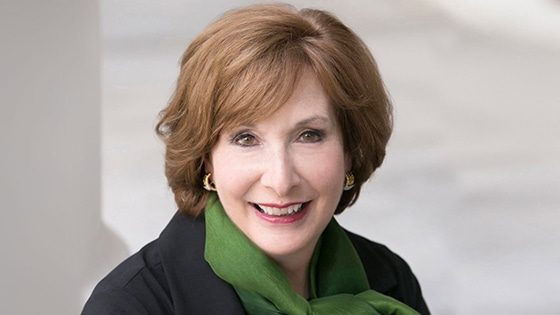
Nothing but total transparency from an organization will suffice when it makes mistakes, says Harvard Business School professor Sandra J. Sucher in this McKinsey interview. “The first step of the process is to take responsibility for the harm you’ve created and to apologize for it,” she says. “The second step—and this gets hard—is to fix accountability for what was wrong.” In such situations, it’s important to focus not just on legal matters or placating external shareholders but also on winning back employee trust by addressing the root cause of the problem. “So it’s these three steps: apologize, fix accountability, and manage the long-term foundation issues that created the breach in the first place,” Sucher says. 
TMI 
Disclosing too much information to the public—especially on social media—can damage reputations and personal relationships. The same warning applies to the workplace. Want to “bring your whole self” to work? Maybe you shouldn’t. At least not in every setting. Many good intentions underlie today’s increasing calls for authenticity at the office—after all, better communication and connectedness can only improve productivity. But authenticity only works if leaders have a realistic view of themselves and know what to reveal and when. Unless you have an accurate read on your audience, context, and motives, it may be best to keep personal information where it belongs—to yourself. One executive’s graphic story of staying up all night with a sick baby elicited discomfort from the audience rather than empathy; another’s revelation about losing a client turned into a cultural faux pas. As psychologist Mike Rucker puts it, “It’s natural to want to develop a relationship with our colleagues, but the workplace is not always a well-suited environment for intimate rapport.” Lead discreetly. — Edited by Rama Ramaswami, a senior editor in McKinsey’s Stamford, Connecticut, office 

Follow our thinking 



Share these insights Did you enjoy this newsletter? Forward it to colleagues and friends so they can subscribe too.
Was this issue forwarded to you? Sign up for it and sample our 40+ other free email subscriptions here.This email contains information about McKinsey’s research, insights, services, or events. By opening our emails or clicking on links, you agree to our use of cookies and web tracking technology. For more information on how we use and protect your information, please review our privacy policy. You received this email because you subscribed to the Leading Off newsletter. Manage subscriptions | Unsubscribe Copyright © 2022 | McKinsey & Company, 3 World Trade Center, 175 Greenwich Street, New York, NY 10007
by "McKinsey Leading Off" <publishing@email.mckinsey.com> - 02:35 - 11 Jul 2022 -
Buy now, pay later is catching on fast. Where does that leave credit-card companies?
McKinsey&Company
Four trends in BNPL .

Competing for cardholders In the news • Roundabout refunds. It’s simple to use buy now, pay later (BNPL) companies to purchase items. Getting a refund, though, can be complicated. Consumers say that after making a return, months can pass before getting the money back, if the funds are paid back at all. Angry shoppers are making their feelings known on social media at a time when BNPL companies are facing their own challenges. Higher interest rates make it costlier for the companies to borrow money, and late payments are also on the rise. [WSJ] • Borrowing is big. Consumer borrowing is soaring in the US. In April 2022, total outstanding credit hit $4.5 trillion, a $38.1 billion increase from March, according to government data. So far, US consumers haven’t let rising prices slow down spending, but they are relying on credit cards and dipping into savings to buy basic necessities as well as nonessential goods. From January to March, US consumers opened a record number of credit-card accounts, while the savings rate fell to its lowest point in more than a decade. [Bloomberg] 
What is certain is that credit-card holders are adopting BNPL. Among the users of mid-ticket POS financing, almost 95% have credit cards, finds McKinsey. 
On McKinsey.com • Popular in payments. US consumers love using credit cards. Credit cards accounted for 37% of purchases by dollar value in 2021, with transaction volumes reaching $49 trillion that same year. But the rapid rise of point-of-sale (POS) financing, which combines installment lending with the convenience of making card payments, may be undermining the profitable growth of credit-card businesses. By 2025, US credit-card companies could lose up to 15% of incremental profits to POS borrowing, a simulation run by McKinsey found. • Buy now, pay later. Consumers are choosing BNPL for many reasons, including low APR (starting at 0% in some cases), predictable payments, and the ability to use a payment method that works seamlessly with shopping apps. The popularity of BNPL could erode credit-card purchase volumes: nearly 40% of people who used BNPL to make a purchase said that they would otherwise have paid with a credit card, McKinsey research reveals. See four important trends in BNPL and thoughtful ways to respond. — Edited by Belinda Yu Reinvent credit cards 
Was this forwarded to you? Sign up here. Or send us feedback — we’d love to hear from you. 

Follow our thinking 


This email contains information about McKinsey’s research, insights, services, or events. By opening our emails or clicking on links, you agree to our use of cookies and web tracking technology. For more information on how we use and protect your information, please review our privacy policy. You received this email because you subscribed to the On Point newsletter. Manage subscriptions | Unsubscribe Copyright © 2022 | McKinsey & Company, 3 World Trade Center, 175 Greenwich Street, New York, NY 10007
by "McKinsey On Point" <publishing@email.mckinsey.com> - 12:55 - 11 Jul 2022 -
The week in charts
the Daily read
Grant allocation, quantum-enabled technologies, and more .
Share this email 



ALL THE WEEK’S DATA THAT'S FIT TO VISUALIZE 
Our Charting the path to the next normal series offers a daily chart that helps explain a changing world—as we strive toward sustainable and inclusive growth. In case you missed them, this week’s graphics explored grant allocation, quantum-enabled technologies, credit risk exposure for banks, and reducing process-gas emissions. FEATURED CHART Make that application shine 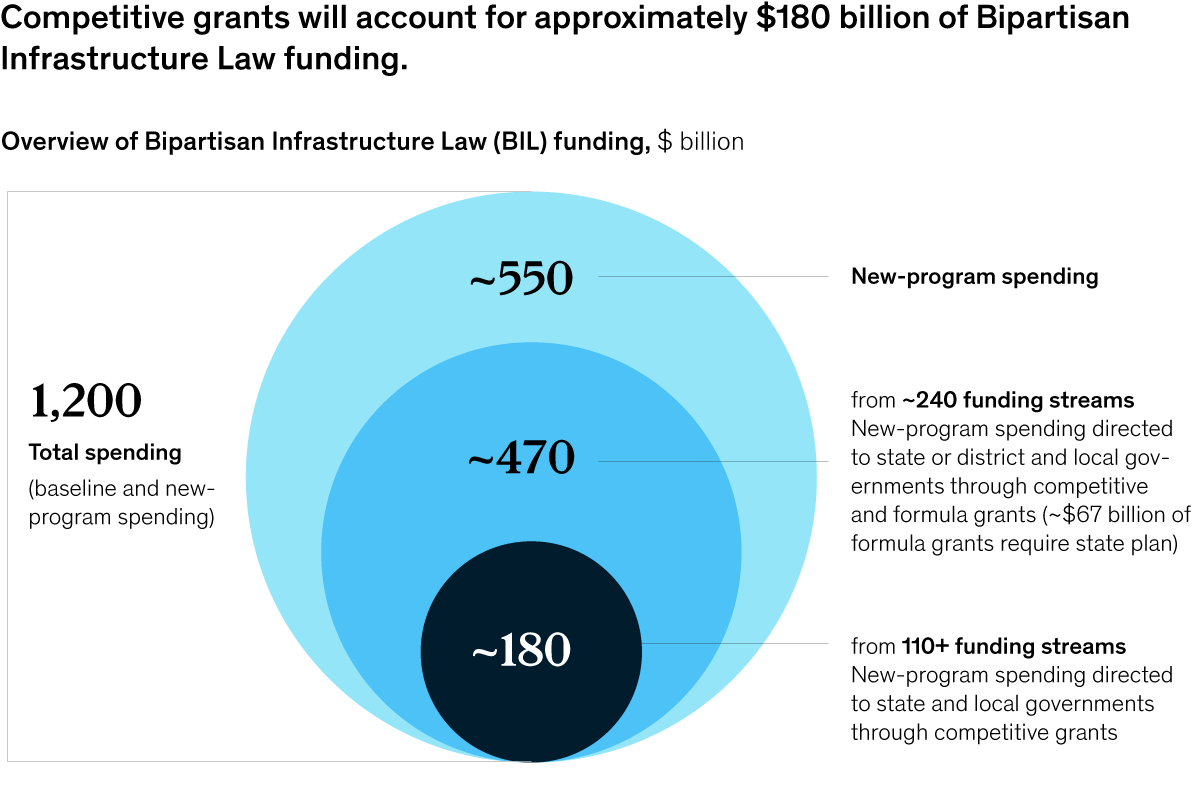
See more 



This week’s other select charts A quantum leap for the planet? Eyeing an uptick in risk What goes up, slowly comes down 

Follow our thinking 



Share these insights Did you enjoy this newsletter? Forward it to colleagues and friends so they can subscribe too.
Was this issue forwarded to you? Sign up for it and sample our 40+ other free email subscriptions here.This email contains information about McKinsey’s research, insights, services, or events. By opening our emails or clicking on links, you agree to our use of cookies and web tracking technology. For more information on how we use and protect your information, please review our privacy policy. You received this email because you subscribed to The Week in Charts newsletter. Manage subscriptions | Unsubscribe Copyright © 2022 | McKinsey & Company, 3 World Trade Center, 175 Greenwich Street, New York, NY 10007
by "McKinsey Week in Charts" <publishing@email.mckinsey.com> - 03:10 - 9 Jul 2022 -
He aquí cómo la experiencia laboral añade valor al capital humano
McKinsey&Company
Además, cuando se trata de la innovación, ¿a qué le tenemos miedo? .
Comparte este email 



Destacados mensuales, Julio de 2022 Como seres humanos, cada uno de nosotros tiene un conjunto único de capacidades que vive y respira. También tenemos un conjunto innato de temores: en el lugar de trabajo, esto puede traducirse en miedo a la crítica, miedo a la incertidumbre y miedo al impacto negativo en nuestra carrera profesional. Las organizaciones que priorizan y refuerzan el desarrollo de los empleados no solo permiten que los seres humanos desplieguen todo su potencial profesional, sino que también fomentan una cultura organizacional de innovación. Este mes, nuestras historias destacadas analizan cómo la experiencia laboral contribuye a casi la mitad del valor del capital humano —es decir, el conocimiento colectivo, los atributos, las habilidades, la experiencia y la salud de la fuerza laboral—, así como por qué la cultura y la experiencia del empleado en torno a la innovación se correlacionan en gran medida con el éxito general de una organización en materia de innovación. Otros temas destacados en la edición de este mes son: - Lo último sobre la inflación y un análisis de la economía mundial
- Cómo las organizaciones de los sectores público y privado pueden llegar a tener una postura resiliente y estar preparadas para resistir los choques
- Cómo el presidente ejecutivo de Wipro, Rishad Premji, asumió la tarea de remodelar la cultura del gigante indio del software
- Una mirada retrospectiva a los 20 años de McKinsey on Finance, y lo que pueden traer las próximas dos décadas
La selección de nuestros editores 

Capital humano en el trabajo: El valor de la experiencia El capital humano representa dos tercios de la riqueza del individuo promedio, y la experiencia laboral aporta casi la mitad de ese valor. Siga el conocimiento 





El factor miedo: Superando las barreras humanas a la innovación La preocupación por el fracaso, las críticas y el impacto en la carrera profesional impiden que muchas personas adopten la innovación. Aquí se explica cómo crear una cultura que tenga en cuenta el lado humano de la innovación. Abrace nuevas posibilidades 




LOS DESTACADOS DE ESTE MES 
Resumen ejecutivo de Global Economics Intelligence Los bancos centrales actúan contra la inflación; la industria estadounidense se expande mientras la economía de China se contrae en medio de las medidas contra la COVID-19; persisten los problemas de suministro. Actualícese 

Resiliencia para un crecimiento sostenible e inclusivo La resiliencia debe entenderse como la capacidad de hacer frente a la adversidad, resistir los impactos, adaptarse y acelerar continuamente a medida que surgen disrupciones y crisis a lo largo del tiempo. Prepárese para el impacto 
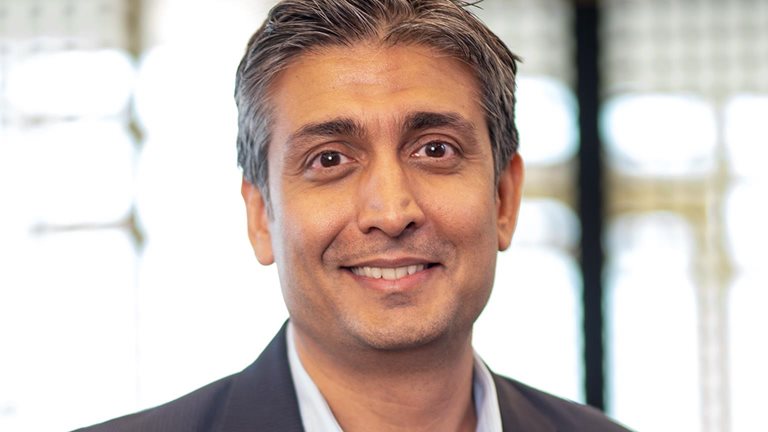
Rishad Premji y la búsqueda de una cultura de alto rendimiento en Wipro El presidente ejecutivo de la empresa global de servicios tecnológicos Wipro, Rishad Premji, quiere promover el cambio cultural en esta organización de 77 años mediante la institucionalización de cinco hábitos en el lugar de trabajo. Transforme la mentalidad 
Reflexiones sobre los 20 años de McKinsey on Finance, y tres desafíos por delante Las innovaciones revolucionarias, las ideas brillantes y los imperativos climáticos cambiarán todo, excepto los fundamentos de las finanzas y la economía. Dé un paso atrás 

El fracaso no es una opción: Cómo aumentar las posibilidades de lograr el cero neto Los países y las empresas de todo el mundo están adoptando medidas para lograr cero emisiones netas, pero sus planes podrían descarrilarse fácilmente por diferentes factores. Aquí se exponen algunas consideraciones para ayudar a mantenerlos eh el camino. Vigile y adapte 

Cómo ser un gran CEO del siglo XXI ¿Qué hacen los CEOs? ¿Por qué lo hacen de esa manera? ¿Y qué es lo que más importa? Aprenda sobre liderazgo Esperamos que disfrute de los artículos en español que seleccionamos este mes y lo invitamos a explorar también los siguientes artículos en inglés. 

SPECIAL FEATURES 
Environmental, social, and governance report Last year marked a pivotal moment for McKinsey, which set a long-term aspiration to help shape and accelerate a new era of growth that is both sustainable and inclusive. Download the full report 

Author Talks Discover our latest interviews with authors of books on business and beyond. Smarten up 
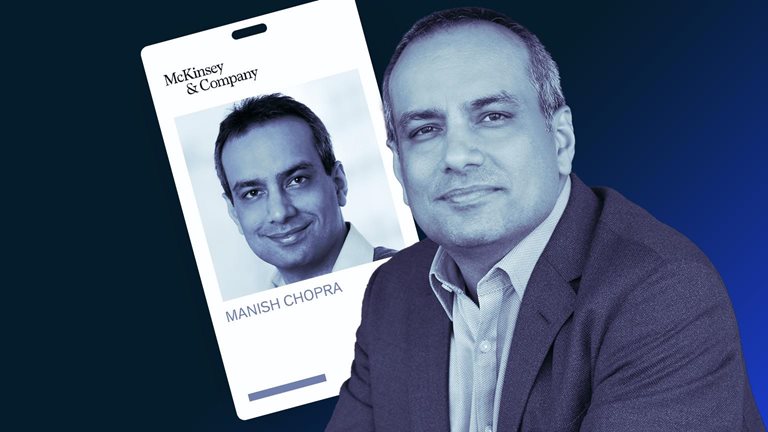
My Rookie Moment McKinsey senior colleagues share their formative early-career experiences to help you navigate yours. Watch the latest episode 
The McKinsey Crossword Sharpen your problem-solving skills the McKinsey way, with our weekly crossword. Play on 

McKinsey Classics Basic trends and responses in bank risk can reveal the future of the risk function throughout big business. Read our 2016 classic “The future of bank risk management.” Rewind 

Leading Off Read a sample of our Leading Off newsletter, and sign up for it or any of our 40+ free email subscriptions. Subscribe — Curated by Eleni Kostopoulos, a digital publishing manager in McKinsey’s New York office 

Follow our thinking 


McKinsey Insights - Get our latest
thinking on your iPhone, iPad, or Android


Comparta estas ideas ¿Disfrutaste este boletín? Reenvíelo a colegas y amigos para que ellos también puedan suscribirse.
¿Se le remitió este articulo? Regístrese y pruebe nuestras más de 40 suscripciones gratuitas por correo electrónico aquí.Este correo electrónico contiene información sobre la investigación , los conocimientos, los servicios o los eventos de McKinsey. Al abrir nuestros correos electrónicos o hacer clic en los enlaces, acepta nuestro uso de cookies y tecnología de seguimiento web. Para obtener más información sobre cómo usamos y protegemos su información, consulte nuestra política de privacidad. Recibió este correo electrónico porque es un miembro registrado de nuestro boletín informativo Destacados. Manejar suscripciones | Cancelar Copyright © 2022 | McKinsey & Company, 3 World Trade Center, 175 Greenwich Street, New York, NY 10007
by "Destacados de McKinsey" <publishing@email.mckinsey.com> - 08:46 - 9 Jul 2022 -
MD, your opinion matters - don’t miss out!
MD, your opinion matters - don’t miss out!
Hello MD
Last week, Remote launched a Global Benefits Survey. This survey helps us understand assumptions about hiring remotely in other countries and the importance of benefits - and we want to hear directly from you.
If you haven’t done so already, please take a few minutes and let your voice be heard by taking this survey.
As a thank you for your participation, upon completing this survey, you are invited to opt-in for a drawing to win an iPad Air (5th generation) or receive a report of the results sent directly to you.Thank you for sharing your insights!
Your Remote Team
You've got questions?
We've got answers.
Save time with 24/7 access to Remote’s Help Center.
You received this email because you are subscribed to News & Offers from Remote Technology, Inc.
Update your email preferences to choose the types of emails you receive.
Unsubscribe from all future emailsRemote Technology, Inc.
Copyright © 2022 Remote Technology, Inc. All rights reserved.
18 Bartol St. #1163 San Francisco California
by "Remote" <hello@remote-comms.com> - 08:15 - 8 Jul 2022 -
Don’t worry, be happy: Why having fun should be high on your to-do list
The Shortlist
Delight yourself .
Share this email 



Our best ideas, quick and curated | July 8, 2022 View in browser 
This week, how to make fun a priority, not an afterthought. Plus, personalized vitamins and the future of wellness, and Tech for Execs explains the crucial role of data products. 
Are you having enough fun? It’s a darn good question, especially during this mellower summer season for many of us. McKinsey recently interviewed Catherine Price about her new book, The Power of Fun: How to Feel Alive Again. She offered tips on how to incorporate more playfulness—both at work and at home—and why having fun boosts happiness and resilience. Here’s an edited version of her Author Talks conversation. Fun as a tool. We typically think of fun as something that we can only have or experience when things are already going well, but what I’ve come to realize is that the opposite is true. Actually, fun can boost our resilience and our spirits in a way that makes it easier for us to cope with whatever life may throw our way, whether it’s a global pandemic or anything else. We really need to rethink how we think about fun—less as a treat that we have only if everything’s already going great and more as a tool that we can tap into to help ourselves weather the challenges that life may present. Go with the flow. Flow is the psychological state in which you get so absorbed in your present experience that you lose track of time, like an athlete in the midst of a game or a musician playing a piece of music or even when you’re in the middle of a really engaging conversation. The important point here is that flow is very different from what’s known as “junk flow,” which is the passive state we get into when we’re just consuming content. I’ve come to conclude that when we are having what people describe as fun—true fun—three elements are present: playfulness, connection, and flow. It takes effort to prioritize fun. Think back on your own life to reflect on what activities, people, and settings typically generate fun for you, and then actually make space for those things in your calendar. You will be happier, you’ll be healthier, you’ll be more productive and creative. I signed up for guitar class, and I started feeling this buoyancy and energy that really kept my spirits raised for the rest of the week. I thought, “This is really interesting. What is this feeling that I’m experiencing?” And I realized that the best word to describe it was fun. Start a ‘delight’ practice. This is a way to introduce a fun mindset, which means becoming more appreciative of opportunities for fun that already exist. Simply resolve to notice things in your environment that bring you any delight. They don’t need to be profound or awe inspiring. A friend texted me a picture of ice crystals on his windshield, along with the word “delight.” He lives in Boston where it’s cold, and he could have said, “I hate scraping ice off my windshield all winter.” Try spending time at work sharing delights. You can do it on Slack or wherever you use workplace communication. It brings people closer, gives them something positive to notice in their lives, and is self-reinforcing. And guess what? It’s fun. 
OFF THE CHARTS Europe converges on digital adoption McKinsey’s third annual Digital Sentiment Survey in Europe found that digital adoption remains strong and that there has been a convergence in capabilities among countries in the European Union. Austria and Germany, which have traditionally been slower to adopt digital behaviors, saw the greatest surge in adoption, catching up in industries such as banking, healthcare, and grocery. The United Kingdom had the highest adoption overall, while the Czech Republic, France, Greece, and Portugal saw the greatest decreases in adoption. 
Check out our chart of the day here. 
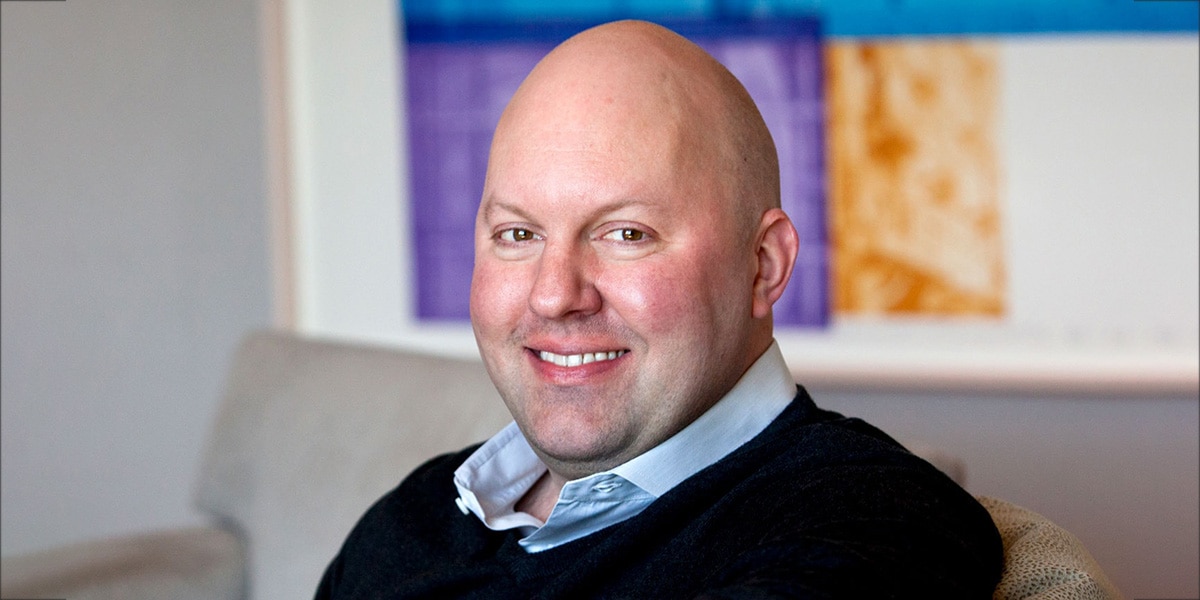
INTERVIEW ‘Find the smartest technologist in the company and make them CEO’ Marc Andreessen, a Silicon Valley stalwart who has launched the likes of NCSA Mosaic, Netscape, and Opsware, has a unique perspective on how new technologies develop, disrupt, and create opportunities for business. In an interview for the McKinsey Quarterly, he tackles tech trends such as artificial intelligence, crypto, and Web3—and digs into why incumbents still have a tough time competing with digital start-ups. “No matter what big Fortune 500 companies say, they still don’t consider themselves technology companies first and foremost,” he says. 
MORE ON MCKINSEY.COM Are personalized vitamins the future of wellness? | Two fast-growing vitamin companies, HUM Nutrition and Vous Vitamin, are betting on personalization. In this podcast, their CEOs discuss the biggest trends in consumer health and wellness. Proposed climate rule signals new era for real estate | The SEC’s draft regulation would require all public companies to disclose emissions and risks related to their real estate. Here’s why the real-estate industry should move preemptively. Reinventing credit cards: Responses to new lending models in the US | Buy now, pay later could pose a challenge to credit cards’ leading position in US payments. To sustain profitable growth, issuers may need to rethink their products, economics, and value propositions. 

TECH FOR EXECS Getting out of the data doldrums with data products McKinsey experts serve up a periodic look at the technology concepts that leaders need to understand to help their organizations grow and thrive in the digital age. What they are. Data products are high-quality, ready-to-use, and reusable sets of data that people across an organization can easily access and apply to different business challenges. For example, a data product could provide a 360-degree view of an important entity, such as customers, employees, product lines, or branches. Or it could deliver a given data capability, such as a digital twin that replicates the operation of real-world assets. Data products sit on top of existing data lakes and storage, and they incorporate the wiring and technologies necessary for different business systems to consume the data within them. Think of them like Lego bricks that are readily available in a published catalog and can, for example, snap into an AI application, like a product recommendation engine, quickly. Why you need them. While nearly every company recognizes the power of data, most still struggle to harness it. Typically, data teams end up piecing together the data sets and technologies anew for every application they build. This approach results in significant duplication; a tangle of bespoke technology architectures that are costly to build, manage, and maintain; and neither the near-term nor long-term ROI that companies seek. For teams building data-driven applications, data products eliminate the long cycles spent searching for data, processing them into the needed formats, and building bespoke data sets and data pipelines. We’ve seen businesses use this approach and deliver new business applications as much as 90 percent faster. Data products can also reduce total cost of ownership—including technology, development, and maintenance costs—by 30 percent and significantly lessen the risk and data-governance burden. A large national bank, for example, developed a customer data product that has powered nearly 60 use cases, ranging from real-time scoring of credit risk to chatbots that answer customers’ questions, across multiple channels. These use cases already provide $60 million in annual incremental revenue and eliminate $40 million in losses annually (for example, those related to fraud). The impact will continue to grow as new use cases are supported. How to make data products work for you. A data product is quite similar to a consumer product and should be managed like one. Each data product should have dedicated management and funding, a set of standards that governs its development, quality assurance, and a way to track both the product’s performance and user input so it can be improved over time. Want more on the “how” of data products? We recently shared our thoughts in this Harvard Business Review article. What technology concepts would you like us to help explain next? Let us know. — Edited by Barbara Tierney Share this Tech For Execs 



BACKTALK Have feedback or other ideas? We’d love to hear from you. 
Tell us what you think 

Follow our thinking 



Share these insights Did you enjoy this newsletter? Forward it to colleagues and friends so they can subscribe too.
Was this issue forwarded to you? Sign up for it and sample our 40+ other free email subscriptions here.This email contains information about McKinsey’s research, insights, services, or events. By opening our emails or clicking on links, you agree to our use of cookies and web tracking technology. For more information on how we use and protect your information, please review our privacy policy. You received this email because you subscribed to The Shortlist newsletter. Manage subscriptions | Unsubscribe Copyright © 2022 | McKinsey & Company, 3 World Trade Center, 175 Greenwich Street, New York, NY 10007
by "McKinsey Shortlist" <publishing@email.mckinsey.com> - 02:45 - 8 Jul 2022 -
How’s your nest egg? When you’re old and gray, you may wish you’d saved more.
McKinsey&Company
Thinking ahead about retirement .

Save it In the news • Regrets, I’ve had a few. A survey of more than 1,100 Americans over age 55 with at least $50,000 in assets revealed what they would most like to tell their younger selves: start saving sooner for retirement. About half the respondents wished they had invested more aggressively, been more frugal, or saved more. These rueful realizations are especially intense right now amid high inflation—respondents’ top financial worry. [CNBC] • Do it my way. Only 33% of families have conversations about investing, revealed a survey of 2,000 13- to 17-year-olds. Educating kids about investing can yield big returns, because if they get started soon enough, they may enjoy 40 years of compounded interest before retirement. An 18-year-old with a $100 a month investing habit—and a 6% return—will be looking at more than $313,000 by age 65. [MarketWatch] 
“Start saving and investing so you can create income for the future tired—or even lazier—version of you.” 
On McKinsey.com • Who wants to be a millionaire? Julien and Kiersten Saunders, creators of the rich & REGULAR blog, are part of a movement known as FIRE, for “financial independence, retire early.” In this edition of McKinsey’s Author Talks, the couple discusses paying off their debts and saving and investing aggressively so that they can retire by their 40s. Their blog shares tips on frugal living and investing, with a special focus on people of color, who may have fewer role models in their lives who have achieved financial independence. • The best is yet to come. The Saunderses’ new book, Cashing Out: Win the Wealth Game by Walking Away, says an important step toward achieving financial independence is to give your income a purpose: for example, it can buy freedom from labor for when you eventually become tired and need to slow down. When income is tied to purpose, it’s less tempting to fritter it away on goods that expert marketers convince us we need. For Black people, there is a special significance, because while Black buying power is high, Black net worth is declining, the Saunders say. — Edited by Katy McLaughlin Save for that rainy day 
Was this forwarded to you? Sign up here. Or send us feedback — we’d love to hear from you. 

Follow our thinking 


This email contains information about McKinsey’s research, insights, services, or events. By opening our emails or clicking on links, you agree to our use of cookies and web tracking technology. For more information on how we use and protect your information, please review our privacy policy. You received this email because you subscribed to the On Point newsletter. Manage subscriptions | Unsubscribe Copyright © 2022 | McKinsey & Company, 3 World Trade Center, 175 Greenwich Street, New York, NY 10007
by "McKinsey On Point" <publishing@email.mckinsey.com> - 12:09 - 8 Jul 2022 -
SmartWaste - Waste Management Software - A Greener, More Sustainable Telematics Solution
SmartWaste - Waste Management Software - A Greener, More Sustainable Telematics Solution

 Humans are yet to master the art of waste management. But with SmartWaste, we all might be just a step away from perfecting it. Grow sustainable waste management businesses with Uffizio. It’s about time that you get used to exceptional transparency, real-time data, & accurate analytics.
Humans are yet to master the art of waste management. But with SmartWaste, we all might be just a step away from perfecting it. Grow sustainable waste management businesses with Uffizio. It’s about time that you get used to exceptional transparency, real-time data, & accurate analytics.Book a Free Demo 
Download the E-Book Now  Please spare a moment and familiarize yourself with our latest platform enhancements.
Please spare a moment and familiarize yourself with our latest platform enhancements.Click to Read Full Article 




Want to change how you receive these emails?
You can update your preferences or unsubscribe from this list.
by "Uffizio Technologies Pvt Ltd" <official@uffizio.in> - 07:00 - 7 Jul 2022 -
Best developer events, free online training, and API governance practices
New Relic
Your weekly scoop on the latest New Relic product innovations, partnerships, and events.Best software developer events
Just because it's summer doesn't mean you can't keep your skills fresh at developer events. Check out our comprehensive, chronological, and regularly updated list of the most helpful events for developers and engineers around the world.
Read moreFree instructor-led online training
Register for online workshops and get a link to the recording and course notes after the event. Upcoming webinars include:
- New Relic Platform Fundamentals (13 & 14 July)
Register now
11 API governance practices
A streamlined API process is important because well-built, consistent APIs attract business. Read how engineering teams can draw on centralised resources to create APIs using a consistent design and set of standards that match their priorities.Determining the root cause of an incident has become more complex as engineers increasingly rely on distributed microservices to power applications. Zebrium helps automate the process of finding the root cause of issues in your logs. Use our Zebrium integration to see root cause details on any New Relic dashboard page, and leverage your telemetry data to help identify and troubleshoot issues faster.
View in browser
This email was sent to info@learn.odoo.com
Unsubscribe or Change Your Email Address and preferences at any time.
New Relic, Inc. 31-36 Golden Ln, Dublin 8, D08 A5RV, Ireland | +353 (01) 687 6808
© 2022 New Relic, Inc. All rights reserved.
New Relic logo are trademarks of New Relic, Inc.
by "New Relic EMEA" <emeamarketing@newrelic.com> - 04:47 - 7 Jul 2022 -
Frontline nurses are still leaving patient care. What will keep them in their roles?
McKinsey&Company
Explore our new global survey .

Fighting for frontline nurses In the news • In need of nurses. Burnout, mental-health issues, unrelenting pressure: frontline nurses are quitting their jobs at a time when strained health budgets and the COVID-19 crisis have made recruiting more difficult. Between April 2021 and March 2022, more than 27,000 nurses and midwives in the UK left the register of workers who can practice in the country, a 13% increase from the prior year. National leaders need to provide more training opportunities in addition to improving working conditions for nurses, says a senior fellow at a UK healthcare charity. [FT] • Overworked. Frontline nurses in the US are fighting an uphill battle to properly care for patients. All over the country, nurses say they are exhausted and overwhelmed. Ongoing staffing shortages have left them working the equivalent of multiple jobs, with long hours, no breaks, and too many patients. Nursing advocates want hospitals to mandate minimum staffing levels, but hospitals say they can’t bear the expense. One US hospital group estimates that members have lost upward of $400 billion from the COVID-19 crisis. [Bloomberg] 
Surveyed nurses in most countries highlighted the ability to take time off and to work specific hours or days of the week as important. 
On McKinsey.com • Leaving the front line. It’s no secret that the COVID-19 pandemic has taken a toll on nurses. But globally, a substantial population of frontline nurses still want to leave their current roles, reveals a March 2022 survey of nearly 800 nurses in Brazil, France, Japan, Singapore, the UK, and the US. In five out of six countries, more than a quarter of nurses say that they will likely quit direct patient care in the next year. That means the risk of global nursing shortages may be rising. In the US alone, an additional 200,000 to 450,000 nurses could be needed by 2025. • Why nurses stay. Across geographies, there is a striking degree of consistency about how nurses feel in their roles. In most countries, nurses say that pay is not a top factor influencing them to stay. Instead, they overwhelmingly state that doing meaningful work, having a positive and engaging work environment, and feeling healthy and safe are among the biggest reasons keeping them in direct patient care, McKinsey research reveals. See a snapshot of nursing in six charts, and the two things nurses believe will most effectively support their well-being. — Edited by Belinda Yu Learn what makes nurses stay 
Was this forwarded to you? Sign up here. Or send us feedback — we’d love to hear from you. 

Follow our thinking 


This email contains information about McKinsey’s research, insights, services, or events. By opening our emails or clicking on links, you agree to our use of cookies and web tracking technology. For more information on how we use and protect your information, please review our privacy policy. You received this email because you subscribed to the On Point newsletter. Manage subscriptions | Unsubscribe Copyright © 2022 | McKinsey & Company, 3 World Trade Center, 175 Greenwich Street, New York, NY 10007
by "McKinsey On Point" <publishing@email.mckinsey.com> - 12:13 - 7 Jul 2022 -
พบกับ ชไนเดอร์ อิเล็คทริค ในงาน Future Energy Asia และ Future Mobility Asia
Schneider Electric
เตรียมพบกับ ชไนเดอร์ อิเล็คทริค ในงาน Future Energy Asia และ Future Mobility Asia 2022 กับธีม Electricity 4.0: Powering the New Electric World
พบกับวิทยากรจากชไนเดอร์ อิเล็คทริค นายมงคล ตั้งศิริวิช รองประธาน ชไนเดอร์ อิเล็คทริค ร่วมพูดคุยใน panel discussion หัวข้อ US$1.2 Trillion Opportunities in Digitalising & Modernising ASEAN’s Grid และ Weili DING ผู้อำนวยการฝ่ายสวิตช์เกียร์ไฟฟ้าแรงดันสูง นำเสนอในหัวข้อ SF6-Free: Sustainable Growth with MV Innovation
ร่วมพูดคุยกับผู้เชี่ยวชาญถึงโซลูชันต่างๆ ได้ที่บูธ ชไนเดอร์ อิเล็คทริค (MK01 ฮอลล์ 98) ณ ไบเทค บางนา ในวันที่ 20 - 22 ก.ค.
พิเศษ! เมื่อลงทะเบียนกับ ชไนเดอร์ อิเล็คทริค ตอนนี้ และเข้ามาเยี่ยมเราที่บูท เพียงแสดง email การยืนยันการลงทะเบียน รับของที่ระลึกสุดพิเศษจาก ชไนเดอร์ อิเล็คทริค ไปเลย!SF6-Free Switchgearพบกับเทคโนโลยี SF6-Free MV Switchgear ลดการปล่อยก๊าซคาร์บอนไดออกไซด์ ลดผลกระทบต่อสิ่งแวดล้อม และเพิ่มประสิทธิภาพในการเชื่อมต่อ
เครื่องชาร์จรถยนต์ไฟฟ้าใหม่! EV Charging Solutions มาพร้อมระบบการจัดการพลังงาน เลือกเวลาชาร์จหรือจำกัดกระแสไฟฟ้าได้ พร้อมระบบป้องกันการขโมยสายชาร์จ
โซลูชันการบริหารจัดการพลังงานโซลูชันอัจฉริยะเพื่อจัดการพลังงานได้เหนือกว่า เช่น
• Building Management Systems
• Power Monitoring and Control
และอื่นๆ อีกมากมาย+ Lifecycle Services From energy and sustainability consulting to optimizing the life cycle of your assets, we have services to meet your business needs. Schneider Electric
46 Rungrojthanakul Building. 1st, 10th, 11th Floor, Ratchadapisek Road. Huaykwang
Bangkok - 10310, Thailand
Phone +662 617 5500© 2022 Schneider Electric. All Rights Reserved. Schneider Electric is a trademark and the property of Schneider Electric SE, its subsidiaries and affiliated companies. All other trademarks are the property of their respective owners.
by "Schneider Electric" <reply@se.com> - 04:02 - 6 Jul 2022 -
Big, global trends are shaking up the fashion industry. How can brands thrive?
McKinsey&Company
Three big challenges in fashion .

Fashion forward In the news • Dressed to impress. After two-plus years of staying in, consumers are ditching the sweatpants in favor of party dresses and tailored suits. As people return to in-person socializing, major brands in America and Europe are seeing a rise in the demand for nice clothes. Consumers have a lot to shop for: in the US alone, around 2.5 million weddings are scheduled for 2022. One company that rents out designer clothes reported a doubling of sales in the first quarter of 2022. [Bloomberg] • Borrow or buy? As people become more ethical consumers, paying to wear a stranger’s clothes no longer raises eyebrows. In the UK, renting clothes isn’t as popular as it is in the US, but that may be changing. In 2021, 27% of UK consumers said they were interested in renting apparel, up from 22% a year prior. One London-based clothing rental app recently received $3 million in funding to expand to new markets. Globally, the sharing economy (including peer-to-peer rentals of consumer goods) could total $1.5 trillion by 2024. [FT] 
“We were all surprised by how quickly luxury returned from the lows of the pandemic. This return has mainly been driven by China but also by a strong recovery in the US.” 
On McKinsey.com • Looking for luxury. The fashion industry is facing a raft of challenges, including conflict in Europe, the COVID-19 crisis, and continued high inflation. But despite economic headwinds, consumers are raring to spend on high-end fashion, with very strong demand for luxury so far, says McKinsey’s Achim Berg. Companies are ready to dress consumers for celebrating and entertaining, and categories that were hit hard throughout the COVID-19 pandemic, such as high heels, dresses, and suits, are as of now making a strong comeback. • A global shake-up. Travel picking up in Europe, North America, and parts of Asia will affect consumer spending. However, the recovery of fashion will highly depend on how long the war in Ukraine lasts. If energy prices and cost of living continue to increase, consumers could return from their summer vacations feeling pinched by budgets, which might put a damper on large parts of the fashion industry, says Berg. Explore how global trends are shaking up the fashion industry and what companies can do to adapt. — Edited by Belinda Yu See how fashion can thrive 
Was this forwarded to you? Sign up here. Or send us feedback — we’d love to hear from you. 

Follow our thinking 


This email contains information about McKinsey’s research, insights, services, or events. By opening our emails or clicking on links, you agree to our use of cookies and web tracking technology. For more information on how we use and protect your information, please review our privacy policy. You received this email because you subscribed to the On Point newsletter. Manage subscriptions | Unsubscribe Copyright © 2022 | McKinsey & Company, 3 World Trade Center, 175 Greenwich Street, New York, NY 10007
by "McKinsey On Point" <publishing@email.mckinsey.com> - 12:39 - 6 Jul 2022 -
Video entertainment in 2030
McKinsey&Company
Immerse yourself .
Share this email 



New from McKinsey & Company 
Video entertainment in 2030 McKinsey experts predict that video entertainment, in all its forms, will become more immersive, gamified, and personalized. Immerse yourself 



Related Reading 
The future of video entertainment: Immersive, gamified, and diverse You’re at the movies with friends—but the movie is more like a game with a narrative. You feel like you’re in the movie because your seat gets hot when there’s a fire on screen. And everyone can see and hear the movie in whatever language they choose. That scenario could represent the next normal in video entertainment, according to McKinsey experts and industry executives. Watch what happens 


Follow our thinking 


McKinsey Insights - Get our latest
thinking on your iPhone, iPad, or Android


Share these insights Did you enjoy this newsletter? Forward it to colleagues and friends so they can subscribe too.
Was this issue forwarded to you? Sign up for it and sample our 40+ other free email subscriptions here.This email contains information about McKinsey’s research, insights, services, or events. By opening our emails or clicking on links, you agree to our use of cookies and web tracking technology. For more information on how we use and protect your information, please review our privacy policy. You received this email because you subscribed to The Next Normal newsletter list. Manage subscriptions | Unsubscribe Copyright © 2022 | McKinsey & Company, 3 World Trade Center, 175 Greenwich Street, New York, NY 10007
by "McKinsey & Company" <publishing@email.mckinsey.com> - 04:21 - 5 Jul 2022 -
What’s your digital persona? Here’s what most excites metaverse consumers.
McKinsey&Company
How top brands use the metaverse .

Creating value in the metaverse In the news • What’s real? People’s digital lives are just as meaningful as their real lives, claims one philosopher. Reuniting with family members by videoconference can be touching. Bullying on social media involves real emotions and consequences. Investing in cryptocurrency leads to real money being gained or lost. As everyone spends more time online, it’ll become even more important to discuss the nature of reality. Yet if consumers can have meaningful experiences in the metaverse, digital worlds can be just as real as anything else. [NYT] • India’s first metaverse influencer. Meet Kyra. She’s 21 years old, has around 100,000 followers on social media, and calls herself a “dream chaser, model, and traveler.” Oh, and she’s rendered entirely in CGI. Brands are using virtual influencers like Kyra to market their products, promote events, and support social movements. Consumers engage with digital influencers more frequently than with their human counterparts, but some experts are concerned that digitally enhanced images will perpetuate body image issues. [Quartz] 
With its potential to generate up to $5 trillion in value by 2030, the metaverse is too big for companies to ignore. 
On McKinsey.com • Real-world benefits. The metaverse is still being developed, but its real-world benefits are already coming to light. Leading brands are using metaverse platforms to increase consumer loyalty and build community around digital goods, such as virtual clothing and NFT art. One sportswear company’s recent NFT collaboration led to sales of more than $100 million, and millions of gamers are regularly attending virtual concerts. It’s no wonder that investors have poured more than $120 billion into metaverse projects in the first five months of 2022. • Excited and engaged. Consumers are already engaging with the metaverse in many ways, finds a McKinsey survey of more than 3,400 consumers and executives. They’re most excited about connecting with people through virtual immersive experiences and exploring digital worlds. Executives are also keen on metaverse opportunities, with around 95% expecting the metaverse to affect their industry positively within five to ten years. Explore the skills, technologies, and strategies needed to unleash the full potential of the metaverse. — Edited by Belinda Yu See the value in the metaverse 
Was this forwarded to you? Sign up here. Or send us feedback — we’d love to hear from you. 

Follow our thinking 


This email contains information about McKinsey’s research, insights, services, or events. By opening our emails or clicking on links, you agree to our use of cookies and web tracking technology. For more information on how we use and protect your information, please review our privacy policy. You received this email because you subscribed to the On Point newsletter. Manage subscriptions | Unsubscribe Copyright © 2022 | McKinsey & Company, 3 World Trade Center, 175 Greenwich Street, New York, NY 10007
by "McKinsey On Point" <publishing@email.mckinsey.com> - 10:10 - 4 Jul 2022 -
Most popular recent issues—and a brief pause
McKinsey&Company
The Daily Read is taking a break .
Share this email 



Thanks for your continued interest in The Daily Read, and we hope you’ve been enjoying our editors’ picks of McKinsey’s must-read article, chart, and quote for each day. The Daily Read will be taking a break for the next two weeks, but we’ll see you back in your inbox on July 18. In the meantime, you can always browse through our archive of top editions, and here are three of our favorite recent issues featuring some of our most-read articles. Take a look in case you missed them the first time around. And if you have friends or colleagues you think might enjoy The Daily Read when it’s back, we hope you’ll consider forwarding this email or sharing it on LinkedIn, Twitter, or Facebook. If they want to get future issues in their inbox—or to see our 40+ other free email products—they can sign up at mckinsey.com/subscriptions. (You might want to check it out, too, to revisit your subscriptions or find out about new publications.) 
War in Ukraine: Twelve disruptions changing the world 

Fight burnout by asking eight key questions 

The metaverse could generate up to $5 trillion in value by 2030 

Follow our thinking 


McKinsey Insights - Get our latest
thinking on your iPhone, iPad, or Android

This email contains information about McKinsey’s research, insights, services, or events. By opening our emails or clicking on links, you agree to our use of cookies and web tracking technology. For more information on how we use and protect your information, please review our privacy policy. You received this email because you subscribed to the Daily Read newsletter. Manage subscriptions | Unsubscribe Copyright © 2022 | McKinsey & Company, 3 World Trade Center, 175 Greenwich Street, New York, NY 10007
by "McKinsey Daily Read" <publishing@email.mckinsey.com> - 06:28 - 4 Jul 2022 -
Creating (nuanced) autonomy in the workplace: A leader’s guide
Leading Off
Free time .
Share this email 



ESSENTIALS FOR LEADERS AND THOSE THEY LEAD 
As the US celebrates its independence on July 4, references to freedom are everywhere. It might be worthwhile to reflect that while freedom is a privilege to be grateful for, it also comes with checks and balances. This tension is apparent in the postpandemic workplace, where many leaders support employees’ growing demands for autonomy—the ability to control how, when, where, and, increasingly, if they work—but struggle to set parameters around it. Finding the right balance between employee autonomy and management oversight is an enduring challenge: as McKinsey’s Bryan Hancock puts it, “What drives me crazy is when I hear an executive say, ‘This is just a near-term employee power thing.’ No, it’s not.” This week, let’s explore the issue of employee autonomy—and how best to approach it. AN IDEA 
Flexible work is for (almost) everyone Not all work is remote, but more of it is than you might think. That’s one of the notable findings of McKinsey’s latest American Opportunity Survey. At first viewed as a temporary pandemic response, hybrid or remote work has become an enduring feature of the modern world across most industries, occupations, and regions—58 percent of Americans can work from home at least one day a week, 87 percent would work flexibly if offered the chance to do so, and flexible work is one of the top three motivators to find a new job. Flexible work options are available even in traditionally labeled “blue collar” jobs that might be expected to require on-site labor. As new working models evolve, leaders will need to explore which roles can and cannot be performed remotely, how much day-to-day flexibility their teams expect, strategies to integrate on- and off-site workers, and—perhaps most important—ways to measure how well their chosen models are working. 
A BIG NUMBER $200 billion That’s how much employers pay every year in healthcare costs for workplace stress, much of which results from limited job control—the amount of discretion that employees have to determine what they do and how they do it. Research shows that people in roles with more autonomy experience less physical or mental stress in the workplace even if they face greater job demands. Leaders who are challenged to define flexible work options may want to consider the negative impact of restricted job control and the positive impact of employee autonomy: workers who have more control over their jobs are healthier, more engaged, and better motivated, thereby boosting organizational effectiveness. 

A QUOTE “For leaders to facilitate flexibility and succeed in hybrid work, enabling employee autonomy will be paramount.” That’s one of the conclusions of a study of hybrid work published in the Harvard Business Review. According to the researchers, what employees really mean by wanting “flexibility” is wanting autonomy, or the ability to be the primary decision makers of where and when they do their work. By directly blocking this ability, mandates such as requiring a certain number of days in the office are likely doomed to fail. Instead, establish principles, not policies: for example, rather than dictating three days a week in the office, you may want to encourage employees to decide which locations best enable them to carry out certain tasks. Also, consider investing in tools and training to build the skills that employees need to work autonomously. 
A SPOTLIGHT INTERVIEW 
Giving his teams a high degree of autonomy has paid off for Prashant Gandhi, managing director and head of digital payments at JPMorgan Chase. But it didn’t happen at the expense of structure. “While autonomy is celebrated and talked about frequently, I find that what’s often missing is a careful discussion on the management systems needed to support it,” he says in this interview with McKinsey. “Otherwise you get chaos.” Gandhi’s organization uses a shared culture and guiding principles—in this case, centered on customer satisfaction—to set up a management system that rewards independence and initiative. “If you lay out principles, give people autonomy to deliver on those principles, and provide a system of reviews that’s fair and rigorous, people get it and rally around it,” he says. 
CATCH ME IF YOU CAN 
Flexibility has its downsides. Employees who work remotely report burnout, alienation from colleagues, feeling invisible to management, and a host of other ill effects. For employers, the implications are different but no less dire. There is often a lingering fear that remote workers may slack off during business hours, moonlight, leak confidential information, or otherwise abuse their flexibility. Using remote monitoring tools without disclosure may raise legal risks. Ultimately, creating a culture of trust and transparency may be the best way for leaders to ensure autonomy—within necessary limits. Lead flexibly. — Edited by Rama Ramaswami, a senior editor in McKinsey’s Stamford, Connecticut, office 

Follow our thinking 



Share these insights Did you enjoy this newsletter? Forward it to colleagues and friends so they can subscribe too.
Was this issue forwarded to you? Sign up for it and sample our 40+ other free email subscriptions here.This email contains information about McKinsey’s research, insights, services, or events. By opening our emails or clicking on links, you agree to our use of cookies and web tracking technology. For more information on how we use and protect your information, please review our privacy policy. You received this email because you subscribed to the Leading Off newsletter. Manage subscriptions | Unsubscribe Copyright © 2022 | McKinsey & Company, 3 World Trade Center, 175 Greenwich Street, New York, NY 10007
by "McKinsey Leading Off" <publishing@email.mckinsey.com> - 02:44 - 4 Jul 2022 -
Top 5 from the McKinsey Global Institute
McKinsey&Company
At #1: Human capital at work: The value of experience .
Share this email 



New from McKinsey & Company Top 5 from the McKinsey Global Institute Many of our most popular recent articles come from the McKinsey Global Institute, which you’ve let us know you’re interested in. In case you missed these insights in your inbox, we’ve bundled them up here for another chance to check them out. We hope you enjoy them as much as others have—and that you share them with colleagues and friends who might also be interested. We’re continually developing new articles and reports on these topics, so keep an eye out for those in the days and weeks to come as well. 

Human capital at work: The value of experience Human capital represents two-thirds of wealth for the average individual—and work experience contributes almost half of that value. Follow the knowledge 
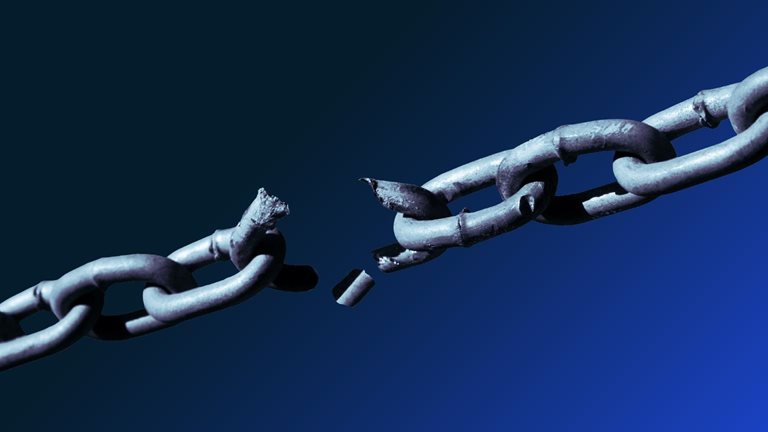

The rising toll of the war in Ukraine Lives lost and upended. Soaring food and energy prices. Supply chains at risk. Much is at stake as the war continues. Understand the crisis 
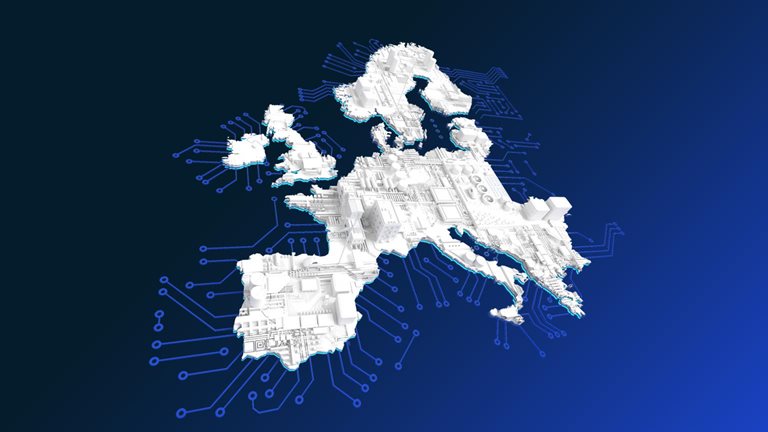

Securing Europe’s future beyond energy: Addressing its corporate and technology gap European leaders have shown great resolve in their initial response at scale and speed to the war in Ukraine. They will need to build the same momentum to face the region’s slow-motion corporate and technology crisis. An estimated €2 trillion to €4 trillion of annual value could be at stake—six times the amount needed for the net-zero transition—and with it Europe’s long-term prosperity and strategic autonomy. A program of 11 actions can turn the tide. Understand regional trends 


Forward Thinking on tech and the unpredictability of prediction with Benedict Evans One of the tech world’s sharpest analysts talks about the frontier and how we got here, connecting the metaverse, Web3, and crypto with everyone from industrialist Henry Ford to writer Voltaire to historian Hugh Trevor-Roper. Look ahead 


Taking the first steps toward net-zero emissions The path to net-zero emissions is full of challenges. Leadership must understand the risks and commit to change now—or face an even thornier transition down the road. Shift to green 


Follow our thinking 


McKinsey Insights - Get our latest
thinking on your iPhone, iPad, or Android


Share these insights Did you enjoy this newsletter? Forward it to colleagues and friends so they can subscribe too.
Was this issue forwarded to you? Sign up for it and sample our 40+ other free email subscriptions here.This email contains information about McKinsey’s research, insights, services, or events. By opening our emails or clicking on links, you agree to our use of cookies and web tracking technology. For more information on how we use and protect your information, please review our privacy policy. You received this email because you subscribed to our McKinsey Global Institute alert list. Manage subscriptions | Unsubscribe Copyright © 2022 | McKinsey & Company, 3 World Trade Center, 175 Greenwich Street, New York, NY 10007
by "McKinsey & Company" <publishing@email.mckinsey.com> - 11:51 - 3 Jul 2022












